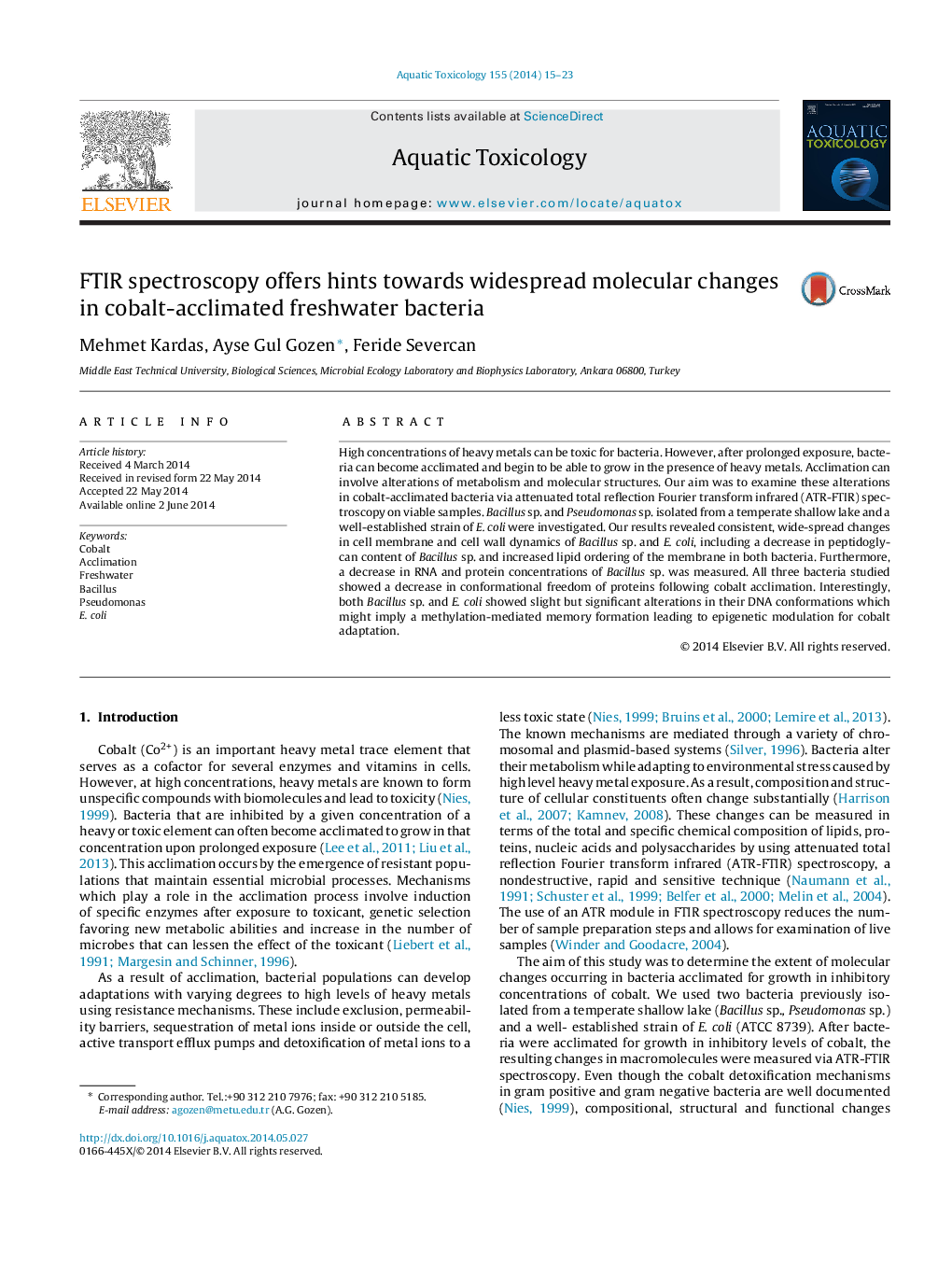| Article ID | Journal | Published Year | Pages | File Type |
|---|---|---|---|---|
| 4529154 | Aquatic Toxicology | 2014 | 9 Pages |
•In cobalt-acclimated bacteria, conformational freedom of proteins decreased.•This points at sequestration by proteins as a general cobalt acclimation strategy.•Contrasting changes in membrane and cell wall molecular dynamics took place.•Significant alteration in DNA conformation occurred within B-form ranges.•This hinted that epigenetic mechanisms contributed to the acclimation process.
High concentrations of heavy metals can be toxic for bacteria. However, after prolonged exposure, bacteria can become acclimated and begin to be able to grow in the presence of heavy metals. Acclimation can involve alterations of metabolism and molecular structures. Our aim was to examine these alterations in cobalt-acclimated bacteria via attenuated total reflection Fourier transform infrared (ATR-FTIR) spectroscopy on viable samples. Bacillus sp. and Pseudomonas sp. isolated from a temperate shallow lake and a well-established strain of E. coli were investigated. Our results revealed consistent, wide-spread changes in cell membrane and cell wall dynamics of Bacillus sp. and E. coli, including a decrease in peptidoglycan content of Bacillus sp. and increased lipid ordering of the membrane in both bacteria. Furthermore, a decrease in RNA and protein concentrations of Bacillus sp. was measured. All three bacteria studied showed a decrease in conformational freedom of proteins following cobalt acclimation. Interestingly, both Bacillus sp. and E. coli showed slight but significant alterations in their DNA conformations which might imply a methylation-mediated memory formation leading to epigenetic modulation for cobalt adaptation.
